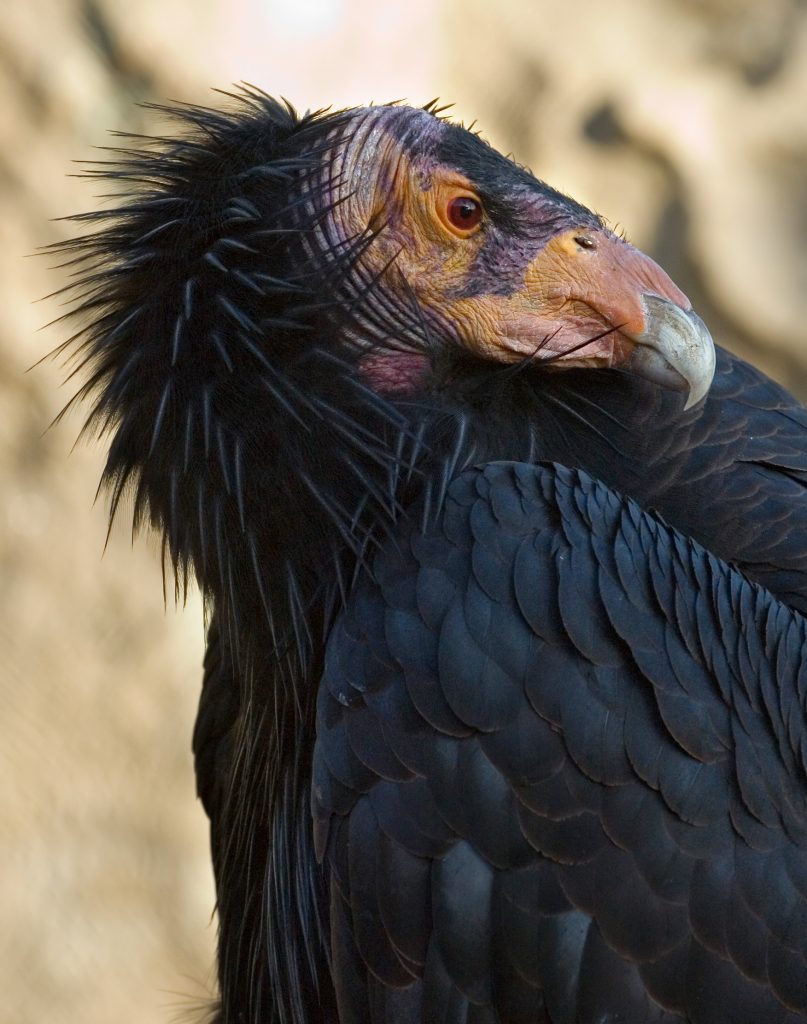
By Hal Michael – The California Condor has been a rather well publicized conservation success story that continues to be written. When people first arrived in North America the range probably extended well east of the Rockies. By the time of European arrival to North America, condors ranged from Baja California north to British Columbia and then over towards the Rockies. By the late 19th Century the range had contracted primarily to central California and Baja California, but the decline continued.
There were a variety of reasons for the decline that included shooting, poisoning, collisions with powerlines, loss of carrion (extinction of Pleistocene Megafauna) and so on. But the one that appears to be most important, at least in the recent past, was lead poisoning with the lead acquired from carrion.
As the population declined, many different, but generally traditional, conservation measures were applied. These included legal protection from killing and rather absolute protection of nesting areas. Protect the animal, protect the habitat. None of these worked. Following much very contentious debate, and the continuing decline, the last few birds were captured and taken into captivity for a captive breeding program.
The captive breeding program was successful in producing young birds which were then released in specific areas. In the early releases, birds got into a lot of problems and seemed too “attached” to people. New methods were developed, more birds released, and the program flourished. Over time, the released birds matured, mated, nested, and brought off young. They also dispersed and have taken up new nesting areas. They now range rather widely looking for food, showing up in areas distant from their release areas, and establishing new breeding sites.
But all was not well. Lead continues to be a problem. Birds are trapped regularly with the intent of capturing each individual at least once a year. The blood is tested for lead levels and then chelated to remove lead, as necessary. Still, some birds are lost annually. The primary solution to the lead problem would be the banning of lead in ammunition. In some particular situations, such as lead poisoning in loons and waterfowl, bans on lead shot and small lead fishing gear has been implemented with good success within those narrow bounds. The banning of lead in hunting and fishing gear can be accomplished but the political battles are intense.
I brought up lead issues as there are future plans or talk for try releases in Northern California, Oregon, and probably the Columbia Gorge, which brings birds regularly to Washington. If and when condors establish a presence here, lead will need to be dealt with. If the experience with previous controls for waterfowl and loons are any guide, at least education needs to begin well in advance of the first releases and perhaps even a consideration as to where release sites should be located.
There is also the whole need for food. Carrion. Prior to human arrival in North America they fed on the carcasses of the North American megafauna. With the disappearance of those animals, it is perhaps not surprising that the last bastion of abundance was the Pacific Coast with its abundant salmon and marine mammal carcasses. Currently, we have a shortage of salmon carcasses along our streams, at least within the BC-Baja coast. At the other end of the scale, for example, there were a lot of dead Grey Whales and pinnipeds along Pacific beaches. There was a great amount of effort to haul them away because who wants a big smelly carcass around? The condors. How do we accommodate the condors and human beach users?
Currently, California Condors are reasonably easy to observe considering their low numbers. Last spring, we found them in both the Big Sur area and Pinnacles National Park. Grand Canyon and Zion are two more National Parks with condors quite visible. eBird has rather up to date sightings and many of the locations are easily accessible by car. For example, the bird we saw in Big Sur was soaring near the restaurant where we had lunch, with outdoor seating to aid in birding. When you see them soaring it is a sight to behold.
Hal Michael spent 34 years with WDG/WDF/WDFW working with salmonids doing research, management, hatcheries, and restoration. Following retirement, Hal has worked as a salmonid ecosystem ecologist with the Sustainable Fisheries Foundation, Ecologists Without Borders, and Marine Sustainability Commission.







